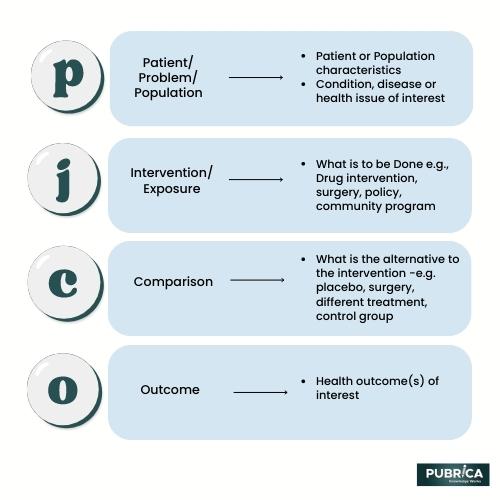PICO Framework
The PICO (Population, Intervention, Comparison, Outcome) framework is a commonly used tool in research, particularly in the field of evidence-based medicine. It is used to formulate research questions and identify key components of a study, which can help design a study, conduct a systematic review, or search for relevant literature.
The PICO framework helps to break down a research question into four components:
Population: The group of people or individuals being studied
Intervention: The treatment, exposure, or action being studied
Comparison: The alternative or standard intervention being used for comparison
Outcome: The result or effect being measured
By clearly defining each of these components, researchers can focus on specific aspects of their research question and avoid ambiguity in their study design or analysis.
The PICO question structure for evidence-based practice is introduced in this tutorial. It delves into PICO’s history, mission, and limits. The guide also offers various question frameworks and examples of inquiries from various health professions.

PICO and Its History
The abbreviation PICO is used to recall the important components of a clinical question. Physicians in evidence-based medicine created the PICO framework to overcome knowledge gaps during patient visits. Questions about a patient’s diagnosis, prognosis, therapy, preventative initiatives, and patient education may emerge. PICO has now become the most often utilized question format for evidence-based practice.
The Purpose of PICO
PICO can be used in both academic and clinical contexts. It can assist you in the following ways:
- Developing a question that focuses on the most significant patient or demographic issue.
- Determine essential phrases to employ in an evidence search.
- Choose results that are immediately relevant to the circumstance.
PICO does have certain restrictions. Interventions, experimental research, and dominating voices are prioritized in the framework.
Overall, the PICO framework can help guide the research process, ensure the research questions’ clarity, and reduce study design bias.
References
Schardt, Connie, et al. “Utilization of the PICO framework to improve searching PubMed for clinical questions.” BMC medical informatics and decision making 7 (2007): 1-6.
